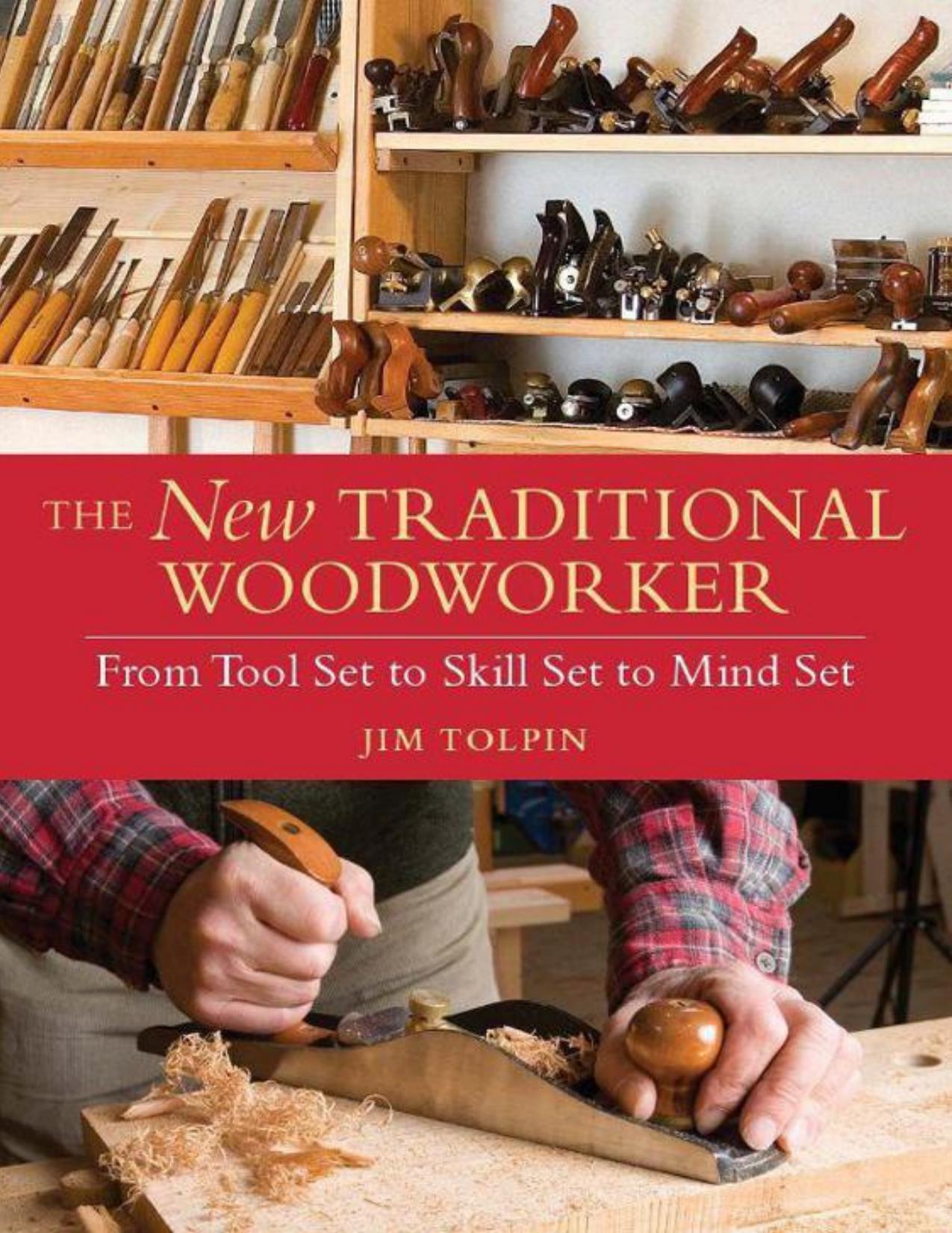The New Traditional Woodworker by Jim Tolpin

Author:Jim Tolpin
Language: eng
Format: epub, pdf
Tags: ebook, book
Publisher: F+W Media
Published: 2011-04-04T16:00:00+00:00
Notes: A) Density can vary within species and even within a specific tree — so characteristics may vary from this chart.
B) In general, the higher the wood’s specific gravity, the denser the wood and, as a result, the more tendency for the wood to change dimension as its internal moisture content varies.
C) In general, denser woods are tougher on cutting edges and require more force to work than less dense woods.
Fortunately for us, beautiful, hand tool-friendly wood is indigenous to North America. It is relatively inexpensive and easy to find through local sawyers in some areas of the country and at hardwood lumberyards often located in the larger metropolitan areas. While you may be tempted by the rich beauty of tropical imports such as sapele and bubinga that will beckon to you at the specialty yards, you would soon discover that working them by hand is a challenge. Their dense, cross-grained fibers push back hard and easily tear out, demanding both the sharpest of tools and high physical exertion to push your tools smoothly through the wood. Of course, not all tropical hardwoods are that demanding — but those that aren’t (such as Honduras mahogany — the wood of choice of early American cabinetmakers) are rare and quite expensive.
Let’s take a closer look at our domestic woods: Though some are a bit too hard and others are too soft, a great many are perfect for hand tool woodworking as you can see in the chart below. Fortuitously, some of the best hand tool-friendly woods are also the most beautiful. When I teach hand tool woodworking, I nearly always start people out with our local northwest red alder. In my experience this wood is one of the friendliest of all the commonly available, kiln-dried domestic species. It planes and pares easily and leaves a smooth surface without being too soft; it’s strong enough for small furniture projects; and while not as beautifully grained as cherry (which it’s closest to in hue), it is still quite attractive. Cherry, red maple and walnut, falling in the middle of the chart have been, and continue to be, North America’s premium furniture woods and are a pleasure to work by hand.
Download
This site does not store any files on its server. We only index and link to content provided by other sites. Please contact the content providers to delete copyright contents if any and email us, we'll remove relevant links or contents immediately.
Audition by Ryu Murakami(4138)
The Body: A Guide for Occupants by Bill Bryson(3876)
Adulting by Kelly Williams Brown(3713)
Housekeeping by Marilynne Robinson(3450)
Zero Waste Home by Bea Johnson(3316)
Be in a Treehouse by Pete Nelson(3256)
Seriously... I'm Kidding by Ellen DeGeneres(3120)
Better Homes and Gardens New Cookbook by Better Homes & Gardens(2986)
Barkskins by Annie Proulx(2902)
The Healing Self by Deepak Chopra(2824)
Hedgerow by John Wright(2797)
The Life-Changing Magic Of Tidying Up- The Japanese Art Of Decluttering And Organizing (v5.0) by Marie Kondo(2769)
Spark Joy by Marie Kondo(2703)
The Genius of Japanese Carpentry by Azby Brown(2635)
The Cellar by Natasha Preston(2628)
Work Clean by Dan Charnas(2580)
120 Days of Sodom by Marquis de Sade(2467)
The Book of Numbers by Peter Bentley(2430)
A Monk's Guide to a Clean House and Mind by Shoukei Matsumoto(2422)
